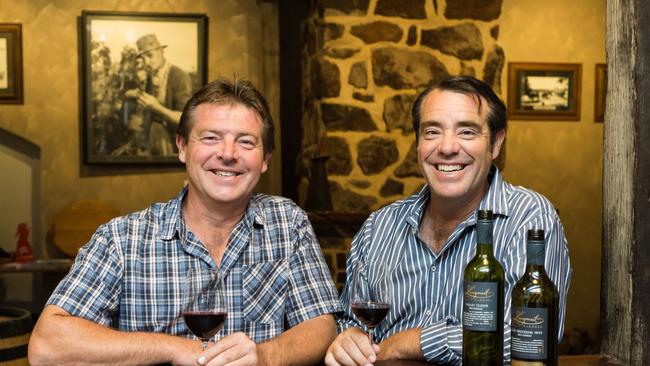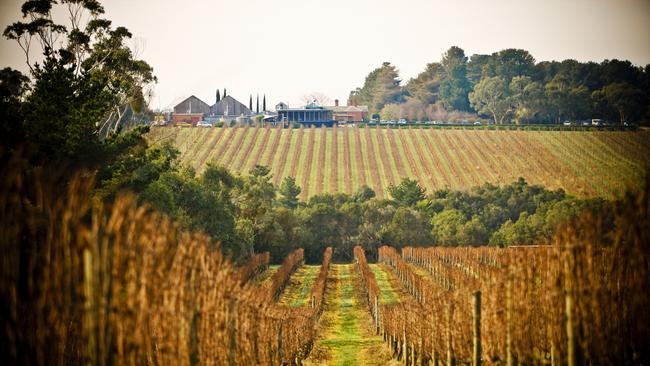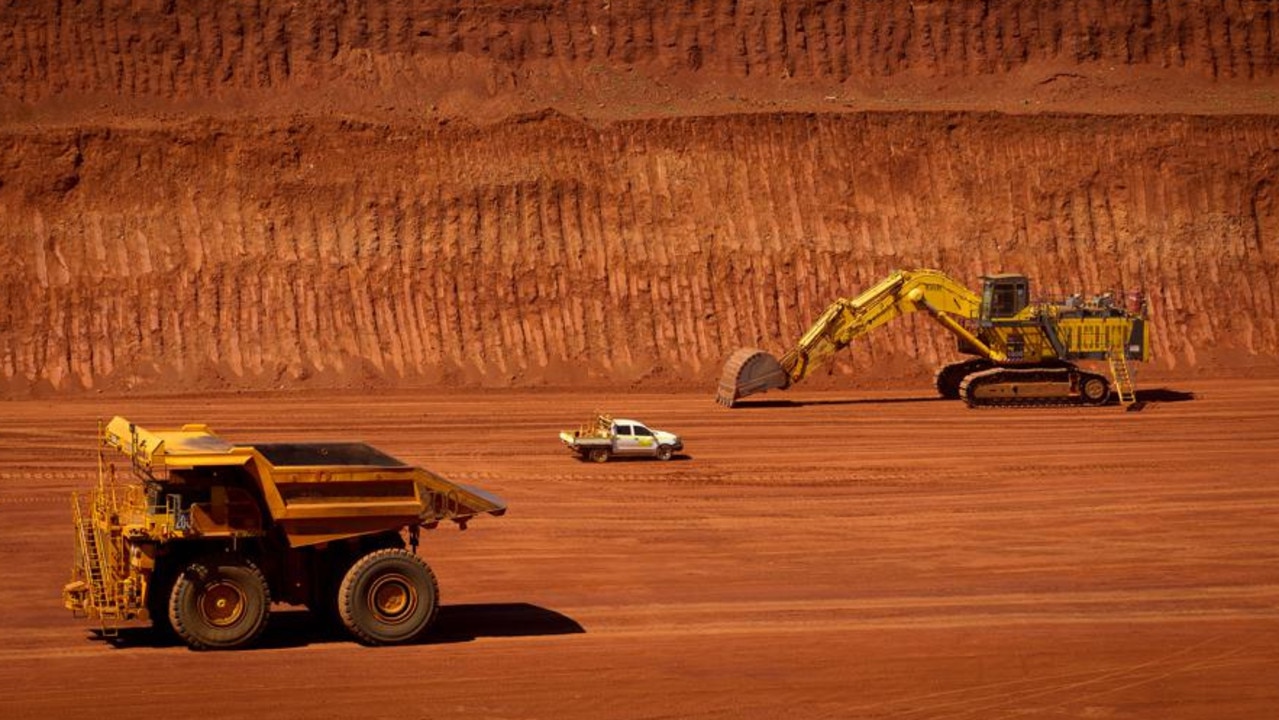Nation’s wine crush slumps to 20-year low
The nation’s latest wine harvest is the lowest since 2000, hurting winemakers’ bottom lines. But there is good news for drinkers.

Business
Don't miss out on the headlines from Business. Followed categories will be added to My News.
Australia’s latest wine harvest has slumped to its lowest levels in more than 20 years with a slashed vintage size threatening winemaker earnings but conversely proving a boon for drinkers as the quality of grapes picked from the nation’s vineyards shows excellent prospects.
The La Nina weather event is the main culprit for the slump in the 2023 wine crush as it produced wet and cool conditions across Australia and dashed the hopes of farmers and winemakers of a lift in supply that could be sent to wineries and turned into wine for sale.
The 2023 Australian winegrape vintage is estimated to be 1.32m tonnes, 26 per cent below the 10-year average and the lowest recorded since 2000, according to the National Vintage Report 2023 released on Tuesday by Wine Australia.
The growing conditions in many regions were widely reported to be the most challenging in at least 20 years, but on the other hand, Wine Australia added, the exceptionally cool season was conducive to producing better quality fruit with excellent flavour.
South Australia has retained its position as the largest contributor to the nation’s wine crush, with a 55 per cent share of the total, despite its second-smallest crush since 2007. NSW was second largest with 27 per cent of the crush, followed by Victoria with 13 per cent. Western Australia, which overall had a very good season, increased its share to 3.5 per cent, while Tasmania and Queensland each accounted for slightly less than 1 per cent.
The main reduction in the 2023 crush came from the three large inland wine regions: the Riverland (South Australia), Murray Darling – Swan Hill (NSW and Victoria) and Riverina (NSW). The crush from these regions combined was down 28 per cent to 899,936 tonnes, whereas the crush from the rest of Australia’s wine regions was only down by 15 per cent compared with 2022, at 417,162 tonnes.
James Lindner, whose family owns Barossa winery Langmeil, said the harvest on his vineyards was down by 15 per cent, but this was supplemented by grape purchases from other growers, while the quality of what was picked was certainly much improved, promising some beautiful wines down the track.
“Certainly it was a harvest to remember, I think because of the cooler year and also the wetter start to the harvest, so basically the fruit hung on and it took longer to ripen and the benefit of that is that extra ‘hang time’ is great for flavour development,” Mr Lindner told The Australian.
“We are pretty happy with where the quality is sitting, shiraz we are pretty happy with, riesling from the Eden Valley were very good and those varieties that tend to ripen a little earlier in the harvest excelled.
“And any vintage that is great that has your label on it always just reinforces the quality that you strive for.”
Mr Lindner said his winery typically holds extra stock in reserve in times of smaller vintages to smooth out production levels.

For many winemakers however the smaller vintage will be challenging as they have less wine to sell but fixed costs at production facilities.
Wine Australia manager, market insights, Peter Bailey said the second consecutive smaller vintage will have a direct impact on grape and wine businesses.
“This smaller vintage, which will reduce the wine available for sale by around 325m litres, is likely to have a considerable impact on the bottom line of grape and wine businesses all around Australia, at a time when the costs of inputs, energy, labour and transport have increased significantly,” Mr Bailey said.
A third consecutive La Nina event produced the wettest year since 2011, and it was also Australia’s coolest year since 2012. Persistent winter and spring rainfall across much of southeastern Australia made access to vineyards difficult, as well as causing flooding in some regions. The cool, wet conditions through spring and summer in some regions also led to lower yields, delayed ripening and challenges managing disease.
Further reducing the size of the crush were winery inventory pressures resulting in some yield caps being imposed, uncontracted grapes not being sold and/or vineyards being temporarily taken out of production.
In terms of grape varieties, the red variety crush was 711,777 tonnes, down by 26 per cent year-on-year, while white varieties were down by 22 per cent to 605,321 tonnes.
Shiraz was the largest variety with a crush of 346,156 tonnes, a decrease of 20 per cent compared with 2022. Chardonnay was the second largest variety overall and largest white variety with 253,887 tonnes, a decrease of 29 per cent compared with 2022. Of the top five varieties, shiraz and sauvignon blanc increased their percentage of the total crush, while cabernet sauvignon, chardonnay and merlot lost share. Sauvignon blanc became the fourth-largest variety, displacing Merlot.
The average winegrape purchase price increased by 2 per cent to $642 per tonne as a result of increases in the average value of red and white grapes from cool-temperate regions, together with the increased share of grapes from these regions in the overall mix, countering the reduction in average value of grapes from the warm inland regions.
Among the top 10 red varieties from cool-temperate regions, average values for cabernet sauvignon increased by 4 per cent and grenache by 3 per cent, while shiraz and merlot decreased slightly. The big mover was pinot noir – up 8 per cent to be the highest-valued top 10 red variety on average across these regions.
More Coverage
Originally published as Nation’s wine crush slumps to 20-year low





